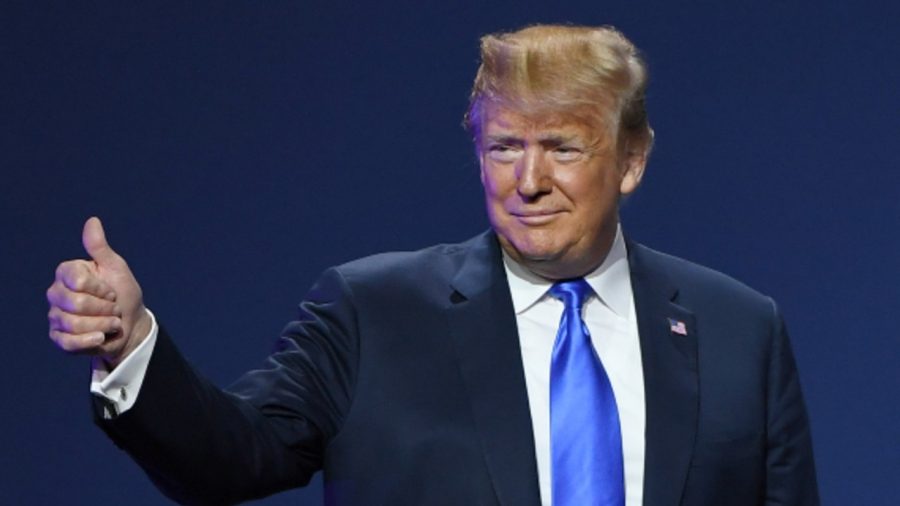Goldman Sachs economist who analyzed the 2020 presidential election have determined that Trump has a “narrow advantage” and will probably pull off another close race.
Trump stunned many political observers in 2016 by beating Democratic candidate Hillary Clinton.
Because he’s an incumbent, Trump will have a “built-in advantage” of 5 to 6 percentage points in the popular vote, Goldman Sachs chief economist, Jan Hatzius, said in the analysis, which was circulated on April 13 and obtained by CNBC. The strong economy will also bolster Trump’s chances; some 58 percent of voters said in an early April poll that they approved of Trump’s handling of the economy.
“The advantage of first-term incumbency and the relatively strong economic performance ahead of the presidential election suggest that President Trump is more likely to win a second term than the eventual Democratic candidate is to defeat him,” Hatzius wrote.

“A strong economy should help the president’s reelection chances. … Political scientists have developed a number of election models over the years that rely mainly on economic variables to predict the two-party popular vote,” he added.
Trump’s approval rating also climbed to 53 percent on April 9, according to a recent poll from Rasmussen, the most accurate pollster in 2016. The president remains divisive, with 37 percent of respondents strongly approving of Trump’s job performance and 36 percent strongly disapproving.
Former President Barack Obama had a 46 percent approval rating around the same time during his first term, according to data published by Rasmussen.

Goldman’s analysis comes after TrendMacrolytics, a research firm that predicted Trump’s 2016 election win, said in mid-March (pdf) that Trump will be re-elected by a wide margin.
“Our proprietary quantitative presidential election model predicts that Trump will be re-elected by a margin of 294 electoral college votes, assuming economic conditions are the same in November 2020 as they are today,” the firm wrote.
“Historically, when the economy is merely okay, incumbents always win unless their party has held the White House for two terms or more. But a GOP candidate could not survive even a mild recession, because it would come on the heels of today’s very hot economy. Conventional ‘business cycle’ thinking says a recession is long overdue, but a successful conclusion to the US-China trade war could reinvigorate global growth and easily forestall one through the election.”

According to the firm, the model correctly predicts every election from 1952 to 2016. The firm predicted that Trump would win by 228 electoral college votes then but he only won by 77. The firm noted that it was off on the number but added, “The model was directionally correct in predicting a Trump win, when virtually all competing quantitive models were pointing—unquestioningly, dogmatically, stridently—in exactly the opposite direction.”
Yale economist and election forecaster Ray Fair also said that Trump would win re-election on the basis of a flourishing economy and the incumbency advantage.
Fair wrote on a Yale website, “Why is the presidential equation so pessimistic for the Democrats? The current case is the best possible one for the Republicans according to the equation: President running again and no negative duration effect. In this case, it takes a weak economy to have the voting equation predict the Democrats getting close to 50 percent of the two-party vote.”


